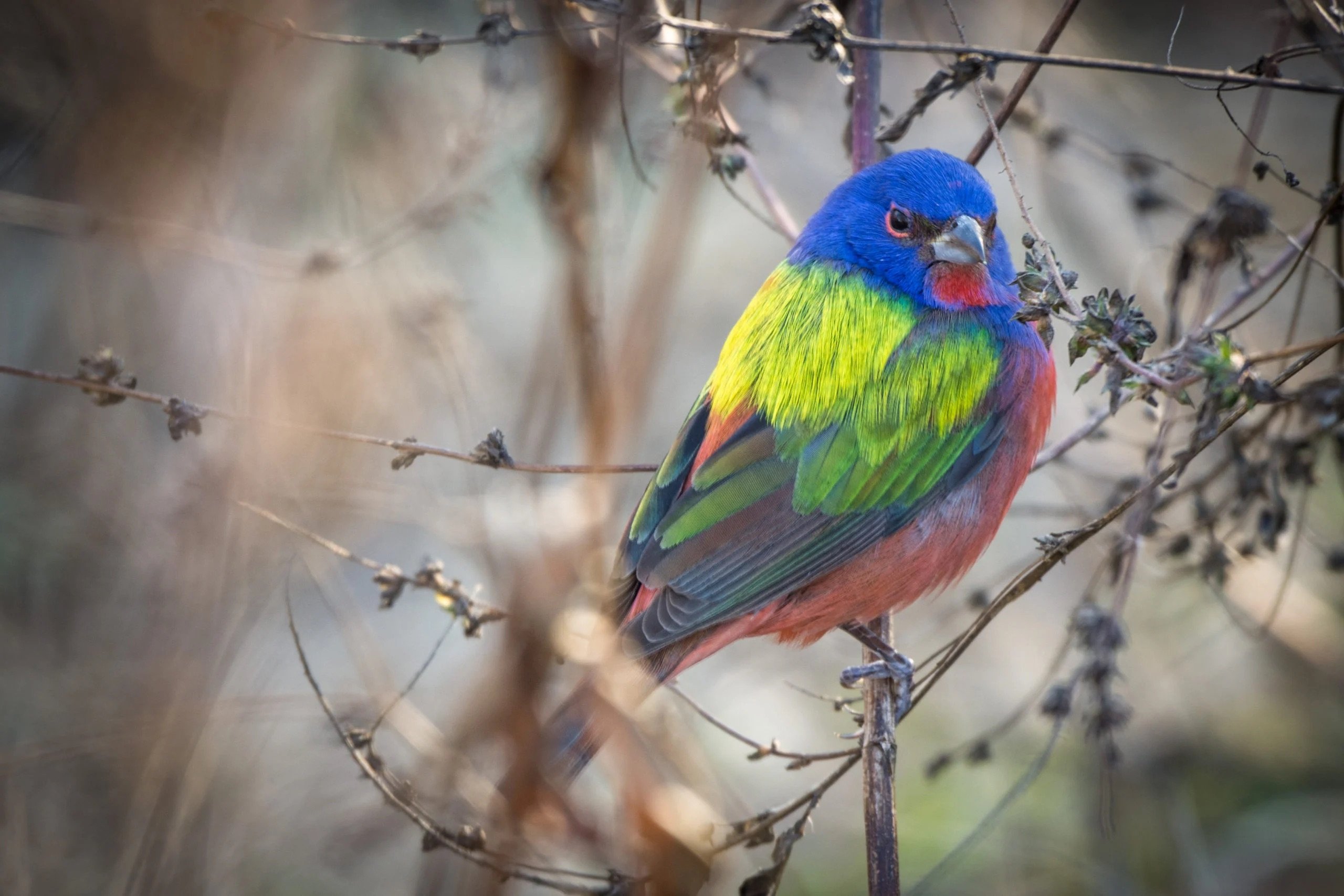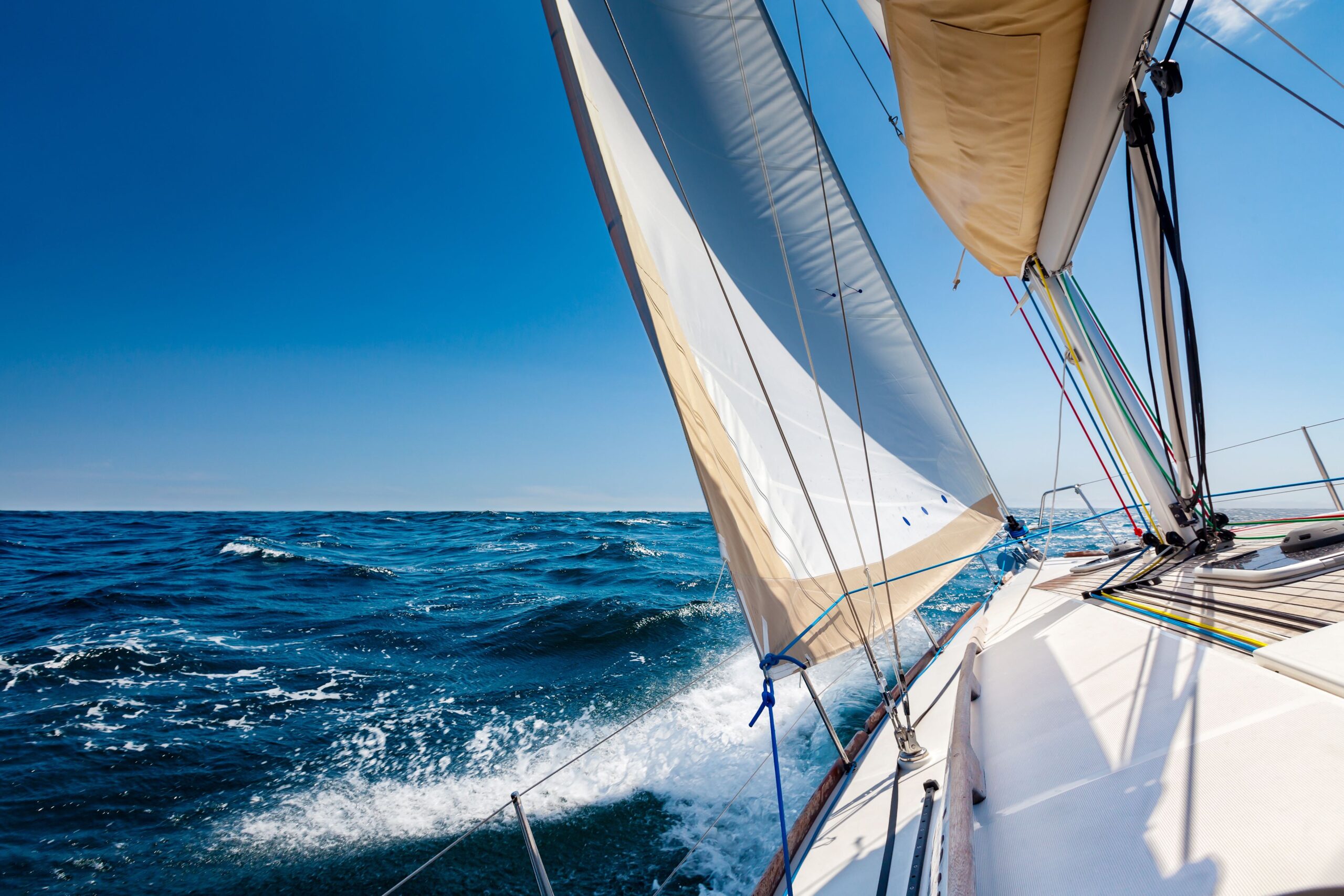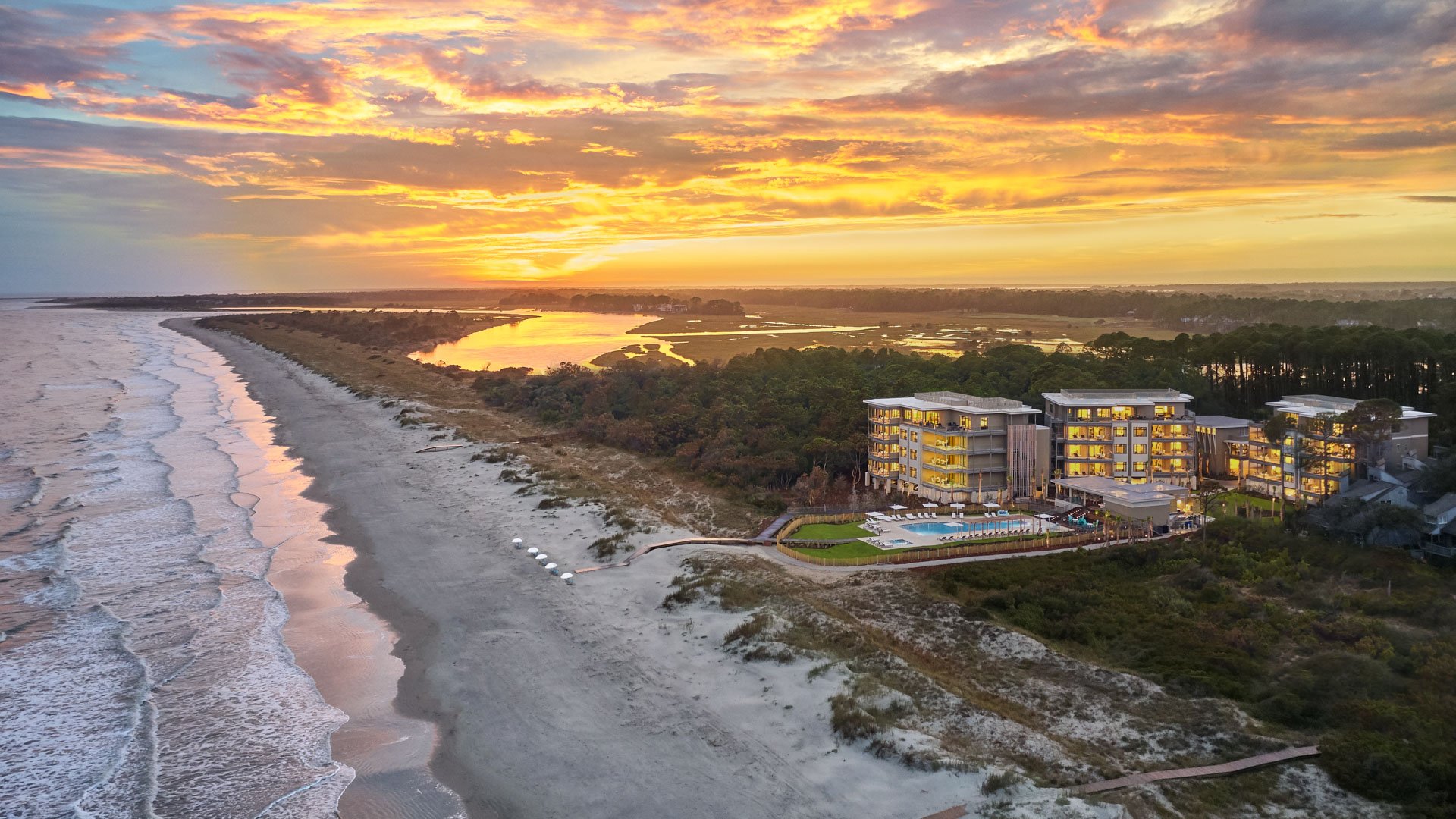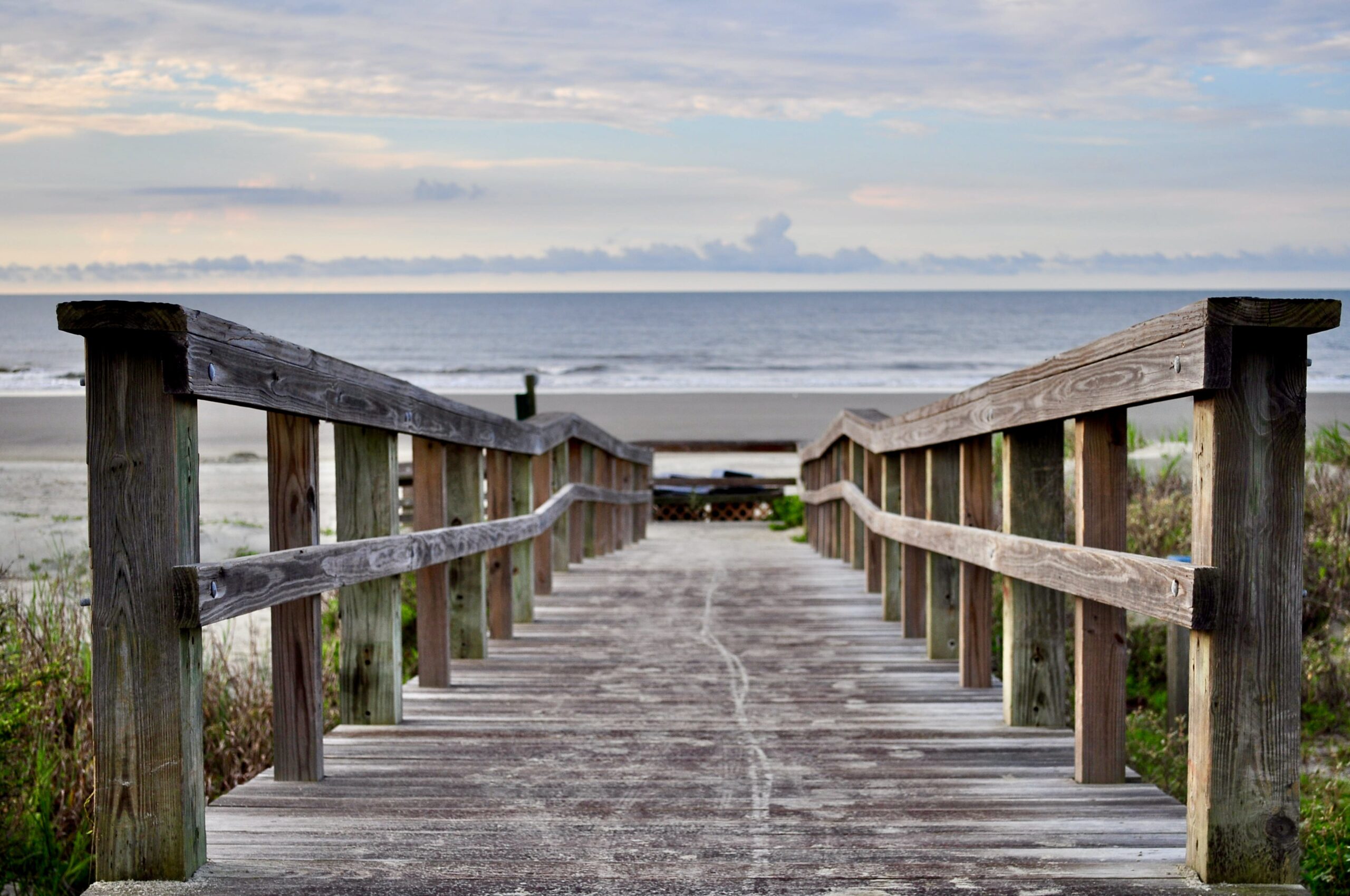Tracking Painted Buntings
December 11, 2020

This sparrow-sized bird, a member of the Cardinal family, is one of the most colorful in North America. Though a common tenant in spring, summer, and autumn on Kiawah Island, its covert nature and exotic look generate a thrill every time one is spotted. Especially for scientist Aaron Given, whose important research work here contributes to an even larger effort to better understand these flying rainbows, where they go in the winter, and how to protect them for the future.
THE NONPAREIL
Among birders, especially in the South, Passerina ciris are referred to as The Nonpareil, meaning “without an equal.” The adult male has a bright blue head, red eye ring, chartreuse back, greenish wings, and a red throat, under parts, and rump. Females and first-year males are pale in comparison, greenish on top and yellowish beneath. Adult males may be pretty, but their fights over territory are not. First-year males’ bland coloring allows them to blend in with foliage, sneak in on breeding females, and reduce detection by predators until they are more mature.
Downplaying their dazzling looks, Painted Buntings tend to be secretive, nesting in scrub shrubs and foraging on the ground for seeds. During breeding season they do shift their diet to insects. Also during this time, the adult males, unable to resist showing off their songbird status, will serenade females from atop coastal trees like wax myrtles, slash pines, and eastern red cedars.

Kiawah’s land use policies have helped maintain the low growing dense understory Painted Buntings prefer. The island has hundreds of collective miles of marsh edge and about eight miles of dune habitat transitioning to maritime forest.
Painted Buntings are divided in two main populations, defined by geography. Our eastern subspecies breed along the Atlantic Coast in the Carolinas and Georgia. In late autumn they fatten up on grass seed, and when that runs out most head down to Florida, Central America, and the Caribbean for the winter. During this time their lives are more of a mystery, and potentially perilous.
WHERE DO YOU GO TO, MY LOVELY?
The Painted Bunting is currently listed as “Near Threatened” by the IUCN (International Union for Conservation of Nature). Breeding Bird Survey data indicate their numbers are down 55% the last three decades. We know habitat loss along the U.S. coast is a major contributor and can work to address that. But once these radiant birds leave our country, there is minimal (and often conflicting) data about their winter experience, starting with where they actually go and stopovers along the way.

Identifying their specific winter destinations will yield clues as to whether those regions (south of the U.S.) are experiencing a loss of proper habitat too, and to what extent the pet trade is a factor. Painted Buntings are often illegally caught and sold in Mexico and the Caribbean as cage birds. This large scale trapping removes them from the breeding population, further contributing to decline. Mapping their winter distribution is a critical part of a challenging conservation initiative across political boundaries.
A COLORFUL HISTORY OF STUDY
The current Painted Bunting research at Kiawah dates back to 2007 when then-grad-student Sarah Latshaw, now with NOAA (the National Oceanic and Atmospheric Administration) in Charleston SC, affixed radio transmitters on the iridescent jewel-like birds as part of her master’s thesis.
In 2008, Aaron Given was hired by the Town of Kiawah as a wildlife biologist and started affixing leg bands to birds that were coming to residents’ feeders. Banding individual birds with a unique identifier enables record-keeping on each one, to collect insights on demographics, behavior, health, and movements of aspecies.
Bird banding requires a special license and several years of training. All banding data collected is submitted to the BBL (Bird Banding Laboratory) administered by the USGS (United States Geological Survey). Yes, there are a slew of acronyms in bird science. Here’s another. The four- letter banding code for Painted Buntings is “PABU”, and is often used as shorthand by scientists and birders.

In 2011, Kiawah started intensely trapping and banding Painted Buntings for a long-term project with PBOT (Painted Bunting Observer Team). This group of volunteer citizen scientists could then easily identify individual birds by sight of their leg bands and record activity in their yards and environs. Through PBOT, several thousand PABUs were banded and monitored across 60 locations in North and South Carolina until the program ended in 2015. This produced an extensive dataset of their habits and migration patterns.
The SMBC (Smithsonian Migratory Bird Center) contacted Aaron in 2017 to collaborate with them on a geolocation study using light-level tags that attach to the birds like tiny backpacks. Sunrise and sunset times recorded on the tag give a broad idea of the latitude and longitude. From these you can determine the basic route and timeline of their journeys. The study is ongoing, however one drawback is data are stored on the geolocator itself, so you need to recapture the birds to collect it.
NEW TECH: NANOTAGS
For a while now, in addition to the studies mentioned above, each year Aaron manages a fall banding migration station on either end of Kiawah Island: one at Captain Sam’s Spit (west end) and another at Little Bear Island (east end). This year he and his team banded 7,199 birds of 92 different species. Among those, 323 were Painted Buntings.
From end to end observations, he’s been curious about intra-island bird movements and was looking for more precise far-range data as well, so they are now using the latest migratory animal geolocation technology — nanotags from the Motus network. (Motus, surprisingly, is not an acronym. It’s the Latin word for movement.) These tiny radio transmitters attach in the same backpack fashion, and are tracked by a fast-growing network of almost 1,000 automated receiver stations set up in 30+ countries across the hemisphere, delivering almost by-the- second details of a bird’s movements. The information is shared by scientists around the world.
Timbers Kiawah’s west-end location and building height presented an ideal spot for a Motus receiver. Aaron’s request was enthusiastically approved by Timbers management, and the receiver is in its second year of operation, tucked away on the rooftop where he goes up every other week to download data.
Tracking information from this project will fill several knowledge gaps needed to effectively define conservation strategies for the Painted Bunting and other at-risk birds.
We’re excited for Aaron to share his discoveries with us, and look forward to related on-site programming for our Owners to learn more about the ongoing ornithology research on Kiawah.
A sincere thank you to Aaron Given for his help with this article. Aaron has been a Wildlife Biologist for the Town of Kiawah Island since 2008. His primary research interest is in ornithology with a focus on avian ecology and management, passerine migration ecology, and secretive marsh bird ecology. He currently manages two of the most ambitious bird banding stations in the Southeast focusing on fall migration, wintering marsh sparrows, Painted Buntings, and Wilson’s Plovers.







